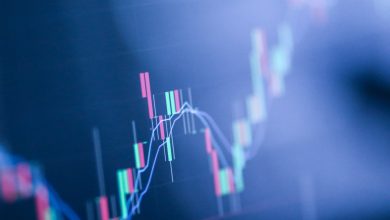No capitalism without capital!
English version of an article published in Le Temps on March 11, 2009.
The current crisis has been analysed in some quarters as “the crisis of a particular type of capitalism” that became “disconnected from real wealth” and was “based on virtual money.” But while the current system has come to rely on lofty pyramids of debt and credit, this is not a result of the free play of markets.
But while the current system has come to rely on lofty pyramids of debt and credit, this is not a result of the free play of markets. On the contrary, the extreme fragility of our economies has been produced by political intervention that has systematically favoured consumption over savings and debt over capital. This is what gave rise to “capitalism without capital” and to the outbreak of the current crisis. To emerge from the crisis, rather than seek to stimulate consumption and the issuance of new debt, it would be a better idea to promote the reconstitution of real savings and capital stock.
This crisis is a credit crisis, caused by the central banks’ lax monetary policies, especially those of the U.S. Federal Reserve. Soon after the technology bubble burst in 2000, the Fed saw fit to revive the economy by means of massive rate cuts, bringing its rate down to 1%. This policy looked successful but turned out to be fundamentally counterproductive, based on the notion that injecting liquidity into the economy provides for the creation of real wealth. It is best not to lose sight of the essential distinction between two types of credit, one favouring economic development and the other a source of malinvestment and crises. The former is based on previously accumulated savings, while the latter is not.
For years, banks were lending money that was spun out of a void through simple accounting entries, with no matching savings. The more this process developed, the more the quantity of money circulating in the economy – in other words, the money supply – became disconnected from economic reality. This “bad” credit granted to borrowers gave them an illusion of wealth. This enabled them to invest in ways they could not have done had interest rates been higher. These investments were malinvestments, meaning they produced no real earnings. Any earnings were more apparent than real, based on the flood of “bad” credit. Most individuals and companies fell for this illusion. This was the bubble phase, and the bubble burst when reality – in other words, the failure of these investments to generate earnings – became more obvious.
This “bad” credit was issued when the balance between credit and savings was ruptured. On the market, this balance is achieved through interest rates, which fluctuate based on supply and demand for liquid assets. In our current monetary system, the process is distorted by the intervention of central banks. Their rates are not market prices; rather, they are rates administered by para-governmental entities. Accordingly, the quantity of credit provided on the market depends not on the real savings stock but on political decisions.
Central banks, even when fairly independent of governments, can thus increase the quantity of “bad” credit, in particular by artificially lowering their rates. This is often done to finance promises for which the existing savings stock is not high enough. In the United States, the aim of creating a “society of homeowners” served as a pretext for measures favouring real estate loans. Between 2000 and 2008, the U.S. money supply doubled, obviously without proportionate growth in real wealth. The roots of the crisis can be found in this flood of “bad” credit, which was welcomed at the time by governments. Public intervention thereby converted capitalism as we knew it into capitalism without capital.
The economic sectors that have been collapsing – the automotive and real estate sectors foremost among them – are those that benefited most from this credit. Policies aimed at promoting cheap credit had the effect of diverting factors of production toward these sectors, to the detriment of other sectors that had been more profitable. “Bad” credit, created out of thin air, causes real harm. It creates the illusion of wealth, moves factors of production from some uses to others, and lies at the origin of many malinvestments.
In contrast, good sense calls for any investment to be matched by real savings. This is why the Keynesian notion of savings as sterile or unproductive is simply wrong. Savings have many virtues: they provide for the issuing of “good” credit and the creation of wealth.
And now, how can the crisis be resolved? Any true recovery can only be a savings-based recovery that allows for profitable investment to be made. This means returning to an economy that relies on savings and capital. But neither central banks nor governments can increase the stock of real savings. This is why it is best to stop manipulating interest rates.
But certain structural reforms are also needed to achieve this transition. Many tax systems provide greater incentive for consumption than for savings. This applies when income from capital – interest or dividends – is highly taxed or when there is a specific wealth tax, as in France. Taxes on business encourage debt financing rather than increases in capital.
Reconstituting a substantial stock of savings also presupposes that governments will put an end to the debt spiral they are trapped in today. When they borrow on the capital market, there is a corresponding reduction in the quantity of savings available for large companies, which also have capital requirements.
Reviving the economy means rebuilding savings stocks and cleaning up “bad” investments. We have to face the facts: there is no capitalism without capital!
Guillaume Vuillemey and Vincent Poncet are Researchers at the Institut économique Molinari





